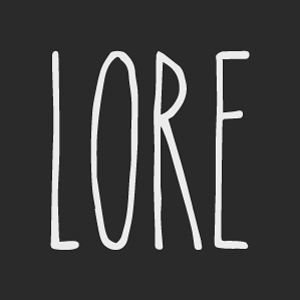“The Annals of Psychical Research, Vol. 1 _Office of the Annals of Psychical Science, January-June 1905_
Armstrong, Edward A. “Mugwort Lore.” Folklore 55_1_, March 1944: pp. 22-27.
“Artemisia vulgaris.” Missouri Botanical Garden. [n.d.] https://www.missouribotanicalgarden.org/PlantFinder/PlantFinderDetails.aspx?taxonid=256948&isprofile=0&
“Cemetery Symbolism: What Do Those Mysterious Monuments Mean?” Laurel Hill. [n.d.] https://laurelhillphl.com/blog/cemetery-symbolism/
Cilliers, L., and F.P. Retief. “Poisons, Poisoning and the Drug Trade in Ancient Rome.” Akroterion 45, 2000: pp. 88-100.
Clarke, Jim. “History’s Greatest Potato Promoter Relied on Science and Stunts.” Atlas Obscura. June 6, 2018. https://www.atlasobscura.com/articles/history-of-potatoes-parmentier
Collard, Franck. The Crime of Poison in the Middle Ages _Bloomsbury Publishing, 2003_.
Conan Doyle, Arthur. The History of Spiritualism _Cassell & Co., 1926_.
Da Silva, Zenia Sacks. The Herb in History, Mysteries and Crafts _Cambridge Scholars Publishing, 2017_.
“datura.” Britannica. July 14, 2024. https://www.britannica.com/plant/Datura
“Datura.” ScienceDirect. [n.d.] https://www.sciencedirect.com/topics/pharmacology-toxicology-and-pharmaceutical-science/datura
Denis, Léon. In the Invisible: Spiritism and Mediumship _FEB, 2023_.
Ellis, Emily. “The World’s Most Magical Plants.” Oak Spring Garden Foundation. October 29, 2021. https://www.osgf.org/blog/2021/10/25/the-most-magical-plants
English, Ali. “Mugwort.” Eldrum Herbs. [n.d.] http://www.eldrumherbs.co.uk/content/content_files/profiles_mugwort_artemisia-vulgaris.php?state=1
Ewbank, Anne. “Mad Honey.” Atlas Obscura. [n.d.] https://www.atlasobscura.com/foods/mad-honey-red-hallucinogen
Fanning, Patricia. “Plant and Flower Symbols at Old Parish.” Old Parish Preservation Volunteers. May 13, 2022. https://www.oldparishpreservationvolunteers.com/post/plant-and-flower-symbols-at-old-parish
Fatur, Karsten. “Belladonna / Deadly Nightshade.” The Society for Ethnobotany. [n.d.] https://ethnobotany.org/home/education/our-favorite-plants/deadly-nightshade-atropa-belladonna-l-karsten-fatur.html
Fatur, Karsten. “‘Hexing Herbs’ in Ethnobotanical Perspective: A Historical Review of the Uses of Anticholinergic Solanaceae Plants in Europe.” Economic Botany 74_2_, 2020: pp. 140-158.
“Flower Medium’s Tricks Exposed.” The Chicago Tribune. June 2, 1901. https://www.newspapers.com/image/350208476/
“foxglove.” Britannica. July 19, 2024. https://www.britannica.com/plant/foxglove
Gardiner, Barbi. “The Magic of Mugwort, the Mother of Herbs.” The Outdoor Apothecary. January 6, 2024. https://www.outdoorapothecary.com/mugwort/
Hayes, Wallace A. Principles and Methods of Toxicology, Fifth Edition _Taylor & Francis, 2008_.
“Helleborus niger - Christmas Rose.” Cornell College of Agriculture and Life Sciences. [n.d.] https://poisonousplants.ansci.cornell.edu/christmasrose/christmasrose.html
“How eating ‘mad honey’ cost Pompey the Great 1,000 soldiers.” Research @ Texas A&M. November 3, 2014. https://research.tamu.edu/2014/11/03/how-eating-mad-honey-cost-pompey-the-great-1000-soldiers/
“The incredible tale of the foxglove, from curing to disease to inspiring Van Gogh’s most striking paintings.” Country Life. June 10, 2018. https://www.countrylife.co.uk/nature/incredible-tale-foxglove-179066
Islam, Tawhida, Iffat Ara, Tariqul Islam, Pankaj Kumar Sah, Ray Silva de Almeida, Edinardo Fagner Ferreira Matias, Cícero Lucas Gomes Ramalho, Henrique Douglas M. Coutinho, and Muhammad Torequl Islam. “Ethnobotanical uses and phytochemical, biological, and toxicological profiles of Datura metel L.: A review.” Current Research in Toxicology 4, 2003: pp. 100-106.
Jansen, Suze A., Iris Kleerekooper, Zonne L. M. Hofman, Isabelle F. P. M. Kappen, Anna Stary-Weinzinger, and Marcel A. G. van der Heyden. “Grayanotoxin Poisoning: ‘Mad Honey Disease’ and Beyond.” Cardiovascular Toxicology 12_3_, 2012: pp. 208-215.
Jemma. “Specimen of the day – Atropa belladonna.” Herbology Manchester. March 23, 2015. https://herbologymanchester.wordpress.com/2015/03/23/specimen-of-the-day-atropa-belladonna/
Jonker, Jamie. “Datura spp._Jimsonweed, Downy Thornapple, Devil's Trumpet, and Angel's Trumpet_.” Cornell College of Agriculture and Life Sciences. [n.d.] http://poisonousplants.ansci.cornell.edu/jimsonweed/jimsonweed.html
Karadja, Princess. “A Wonderful Seance in Berlin.” Light. March 30, 1901. https://www.google.com/books/edition/Light/FNLD3JRM3IYC
Lang, Ariane. “What Is Vervain? All You Need to Know.” Healthline. June 8, 2020. https://www.healthline.com/nutrition/vervain-verbena
“The Language of Flowers.” Smithsonian Gardens. [n.d.] https://gardens.si.edu/wp-content/uploads/2020/05/SIGardens_HistBloom_Language_of_Flowers.pdf
Larsen, Andrew E. “The Inspiration For Disney’s Robin Hood Wasn’t Actually Robin Hood.” Gizmodo. September 20, 2014. https://gizmodo.com/the-inspiration-for-disneys-robin-hood-wasnt-actually-r-1637183737
Mabillard, Amanda. “Macbeth Glossary: blind-worm _4.1.16_.” Shakespeare Online. August 20, 2000. https://www.shakespeare-online.com/plays/macbeth/macbethglossary/macbeth1_1/macbethglos_blindworm.html
Matzdorf, Harriet. “A Shakespearean recipe for Witch’s Brew.” University of Minnesota Libraries. October 26, 2017. https://libnews.umn.edu/2017/10/shakespearean-recipe-witchs-brew/
Mayor, Adrienne. Greek Fire, Poison Arrows, and Scorpion Bombs: Biological & Chemical Warfare in the Ancient World _Overlook, 2008_.
“The Meanings Behind These _In_Famous Potion Ingredients.” Dictionary.com. October 25, 2021. https://www.dictionary.com/e/witch-ingredients/
“Melzer, Heinrich _1873-?_.” Encyclopedia.com. August 16, 2024. https://www.encyclopedia.com/science/encyclopedias-almanacs-transcripts-and-maps/melzer-heinrich-1873
“Mugwort.” National Center for Complementary and Integrative Health. January 2021. https://www.nccih.nih.gov/health/mugwort
“A New Flower Medium in Germany.” The Annals of Psychical Science 4_19_, 1906: p. 63.
“The Powerful Solanaceae: Belladonna.” U.S. Forest Service. [n.d.] https://www.fs.usda.gov/wildflowers/ethnobotany/Mind_and_Spirit/belladonna.shtml
“The Powerful Solanaceae: Datura.” U.S. Forest Service. [n.d.] https://www.fs.usda.gov/wildflowers/ethnobotany/Mind_and_Spirit/datura.shtml
“Rerlin [sic] Blavatsky Brought To Trial.” The Greenville News. April 9, 1903. https://www.newspapers.com/image/187456324/
Ronca, Debra. “Is Eye of Newt a Real Thing?” HowStuffWorks. July 13, 2015. https://people.howstuffworks.com/is-eye-of-newt-real-thing.htm
Roth, Harold. The Witching Herbs: 13 Essential Plants and Herbs for Your Magical Garden _Weiser Books, 2017_.
“Sacred Datura.” Nature Collective. [n.d.] https://naturecollective.org/plant-guide/details/sacred-datura/
Sedlack-Hevener, Amanda. “Cemetery Symbolism: Flowers and Leaves.” Found in Ohio. August 16, 2023. https://foundinohio.com/2023/08/16/cemetery-symbolism-flowers-and-leaves/
Shakespeare, William. Macbeth _Simon & Schuster, 2003_.
Smith, K. Annabelle. “Why the Tomato Was Feared in Europe for More Than 200 Years.” Smithsonian Magazine. June 18, 2013. https://www.smithsonianmag.com/arts-culture/why-the-tomato-was-feared-in-europe-for-more-than-200-years-863735/
“Spiritualists on Trial.” The Telegraph [Brisbane, AUS]. May 8, 1903. https://www.newspapers.com/image/1023180171/
Steven, Isabel. “Rosemary for Shakespeare.” The Rosenbach. April 22, 2022. https://rosenbach.org/blog/rosemary-for-shakespeare/
Stewart, Amy. Wicked Plants: The Weed That Killed Lincoln’s Mother & Other Botanical Atrocities _Algonquin Books, 2009_.
Studders, Steph. “Hellebore: The History of a Toxic Medicinal ‘Remedy.’” A Place Between the Trees. December 6, 2023. https://aplacebetweenthetrees.com/2023/12/06/hellebore-a-herbal-history/
Taub, Benjamin. “‘Mad Honey’ Once Poisoned An Entire Roman Military Column, With Deadly Consequences.” IFLScience. May 4, 2023. https://www.iflscience.com/mad-honey-once-poisoned-an-entire-roman-military-column-with-deadly-consequences-68755
Thompson, Helen. “Poison Hath Been This Italian Mummy’s Untimely End.” Smithsonian Magazine. January 14, 2015. https://www.smithsonianmag.com/science-nature/poison-hath-been-italian-mummys-untimely-end-digitalis-foxglove-180953822/
Tishma, Mariel. “More than ‘toil and trouble’: Macbeth and medicine.” Hektoen International. Spring 2019. https://hekint.org/2019/05/30/more-than-toil-and-trouble-macbeth-and-medicine/
Treitel, Corrina. A Science for the Soul: Occultism and the Genesis of the German Modern _Johns Hopkins University Press, 2004_.
Tyler, Erik. “The Strange and Magical Potato.” Erik Tyler. August 23, 2020. https://eriktyler.co.uk/the-folklore-of-potatoes/
Urbanus, Jason. “Cause of Death.” Archaeology Magazine. May/June 2015. https://archaeology.org/issues/may-june-2015/digs-discoveries/trenches-italy-treviso-nobleman-poisoned/
Vorobyov, Niko. “What it’s like tripping on mad honey, the hallucinogen that _maybe_ is an aphrodisiac.” Salon. April 10, 2022. https://www.salon.com/2022/04/10/what-its-like-tripping-on-mad-honey-the-hallucinogen-that-maybe-is-an-aphrodisiac/
Wigington, Patty. “Flying Ointment.” Learn Religions. February 4, 2019. https://www.learnreligions.com/about-flying-ointment-2562886
Wolffram, Heather. “The Criminological Construction of Female Mediumship in Early Twentieth-Century Germany.” Preternature: Critical and Historical Studies on the Preternatural 6_2_, 2017: pp. 337-359.
“wormwood.” Britannica. August 29, 2024. https://www.britannica.com/plant/wormwood-plant
Zuckerman, Larry. The Potato: How the Humble Spud Rescued the Western World _Farrar, Straus and Giroux, 1998_.
